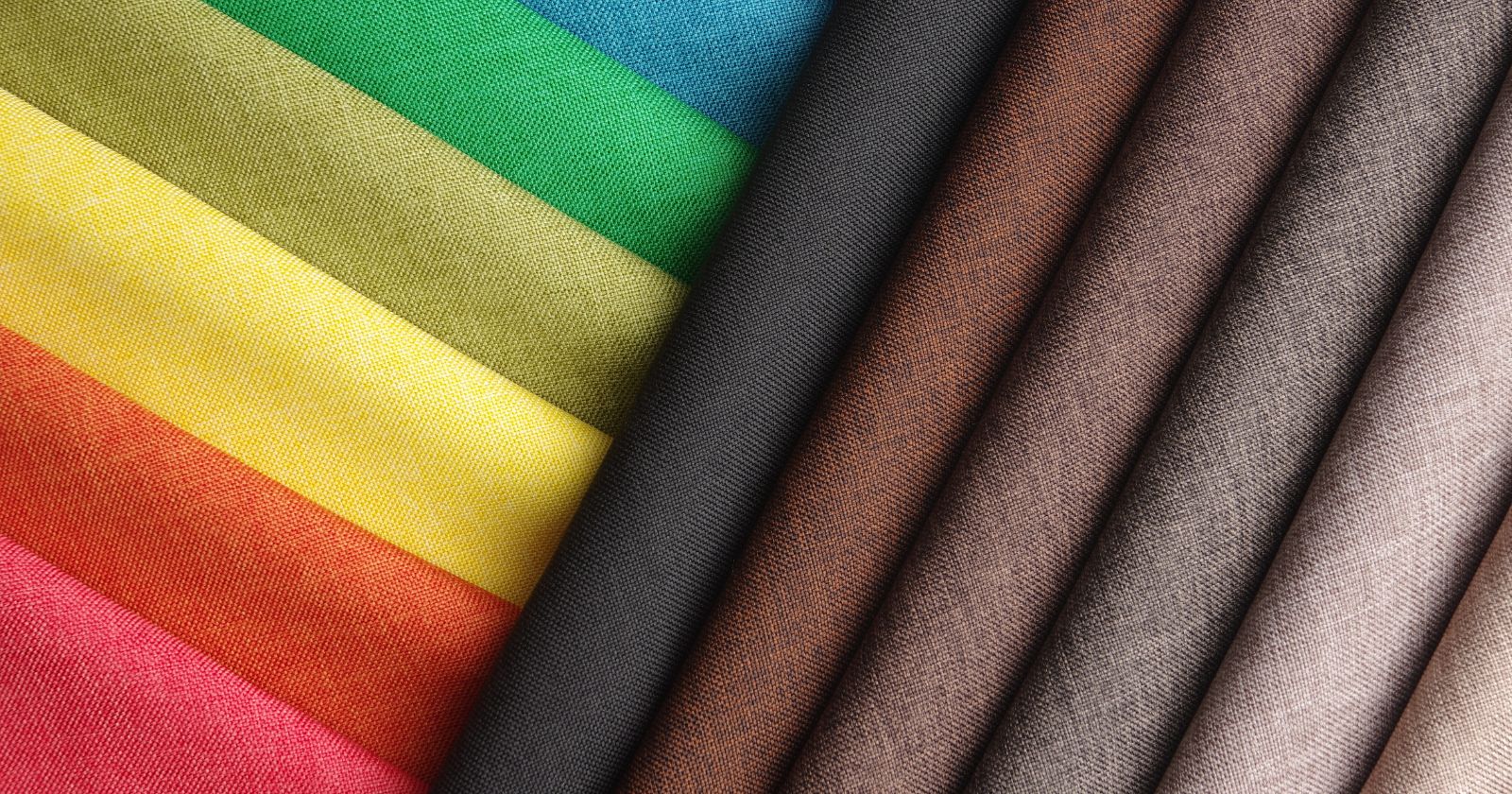Both rayon and nylon are popular fabrics, but which is best, the semi-synthetic rayon fiber (made from chemically treated natural fibers from wood pulp or bamboo) or the fully-synthetic nylon?
The main differences between rayon and nylon fabric are that nylon is significantly more durable and easy to care for, while rayon is more comfortable in warm weather due to improved breathability. Both, however, are typically produced unsustainably.
Key Takeaways
Rayon is semi-synthetic while Nylon is a synthetic fiber
Rayon is better at keeping you cool than nylon
Nylon repels water and dries quicker, making it the choice for activewear
Nylon is considerably more durable than rayon
Neither rayon nor nylon are good for the environment, except Lyocell rayon
Below, we’ve compared rayon and nylon fibers on their comfort and feel, durability, care & maintenance, and production & sustainability. Let’s get started:
Table of Contents
- Definitions and Uses
- Comfort and Feel
- Durability
- Care and Maintenance
- Production & Environmental Impact
- Rayon vs Nylon for Clothes
Rayon vs Nylon Definitions & Uses
Before we delve into the differences, let’s start with some simple definitions:
Rayon is a semi synthetic fabric made from regenerated cellulose fiber, a natural polymer found in plants. It is described as a semi synthetic fiber because the natural fibers are chemically treated during manufacturing.
Rayon’s silky, lustrous appearance makes it a popular choice for clothing, and although the natural raw material has been chemically altered, it still; shares many properties with natural fabrics like cotton and silk. It is used in clothes, home furnishings, including curtains and carpets, and in the medical industry to make gloves.
Nylon is a fully synthetic fabric made from petroleum-based polymers. Nylon fabrics are known for their strength, durability, and elasticity, making it a popular choice for activewear, swimwear, and other demanding applications. It is used in clothing as well as products like tents and ropes.
Rayon vs Nylon: Comfort and Feel
There’s no point using a fabric that feel uncomfortable! In this section, we’ve examined and compared rayon and nylon on their softness, weight, drape, heat retention, moisture absorption, and breathability:
Softness, Weight, and Drape
Rayon is known for its silky, smooth texture that feels gentle against the skin, making it ideal for garments that feel luxurious touch. It is lightweight and drapes well, making it perfect for flowing garments like dresses, blouses, and skirts.
Nylon, although not as soft as rayon, is still smooth, comfortable, and lightweight, but has a slightly more synthetic feel.
Heat Retention, Moisture Absorption, and Breathability
Rayon is a more breathable fabric than nylon, which makes it a better choice for hot and humid climates. Its ability to absorb moisture contributes to this breathability, making it more comfortable in perspiration-prone situations.
Nylon tends to retain heat more effectively than rayon, which can be advantageous when it’s colder. However, because it is not breathable, it also traps moisture. This may make you feel clammy when sweating.
Antimicrobial Properties and Drying Time
Rayon does not possess antimicrobial properties, which can lead to odor buildup in sweaty conditions. Unlike nylon, it absorbs water, so it can be slow to dry and feel heavy when wet.
Nylon can be treated with antimicrobial agents, making it a better option for activewear and situations where odor resistance is important. Additionally, nylon fiber repels water, which means it will dry quicker than rayon. This is one reason why it is a preferred fabric for swimwear and activewear.
Verdict: Rayon Beats Nylon For Comfort In Most Situations
Overall, rayon is more comfortable than nylon, particularly during summer time. The main exception is for sports or swimming, as it becomes heavy when wet and does not dry quickly.
Durability of Rayon Fabric vs Nylon Fabric
Durable clothes need to be replaced less often, which is good for both your wallet and the environment. Here, we’ve compared rayon and nylon on a range of attributes, including tensile strength, abrasion resistance, elasticity, and resistance to various external factors:
Tensile Strength, Abrasion Resistance, and Elasticity
Nylon is known for its superior tensile strength, abrasion resistance, and elasticity compared to rayon. Its strong synthetic fibers make it resilient, and it is capable of withstanding significant stress, strain, and friction, making it ideal for activewear and rugged outdoor clothing.
Rayon, in comparison, is considerably weaker and less elastic, making it more prone to wear and tear, particularly when wet.
Resistance to Wrinkling and Pilling
Nylon also outperforms rayon when it comes to wrinkle resistance and pilling resistance. It will maintain its shape and resist pilling far more effectively than rayon, which is prone to both wrinkling and pilling.
Chemical Resistance and Mold & Mildew Resistance
Nylon’s synthetic fiber resists oil and chemical stains, and because it does not soak up moisture, it is much less likely to suffer from mold or mildew even in damp conditions. Rayon, made from a natural fiber, is more sensitive to chemicals and damp conditions, which may result in discoloration, damage, and mold or mildew growth.
UV Exposure and Colorfastness
Both rayon and nylon can be dyed in a wide range of colors, but nylon tends to have better colorfastness and UV resistance than rayon. Nylon garments will retain their color after multiple washes and are less likely to fade from exposure to sunlight. In comparison, rayon garments, will fade more quickly than nylon ones.
Verdict: Nylon is Considerably More Durable Than Rayon
Nylon easily beats rayon in our durability comparison. It is abrasion resistant, stain resistant, less likely to wrinkle, and stronger in almost every way.
Care and Maintenance of Nylon and Rayon Clothes
Proper care and maintenance will expand the life of your clothes, and if you’re busy it might make sense to choose clothes that are easier to care for. Let’s explore the differences in washing, drying, stain resistance, and their tendencies to wrinkle, shrink, or fade.
Washing & Drying
Many types of Rayon require hand washing or dry cleaning, as hot water will cause them to shrink and lose their shape. This is true when it comes to drying too, so rayon garments should normally be air dried.
Not only can nylon garments be machine washed on a regular cycle with cold or warm water, but they are easier to keep clean because they resist stains. They can also be tumble dried on low heat or hung to dry, and because nylon doesn’t absorb water, they should dry quickly.
Wrinkling, Shrinking, and Fading
Rayon fabrics can be prone to wrinkling and shrinking when exposed to heat, and are almost more likely to fade with repeated washing. Nylon clothes are much less likely to wrinkle or shrink, and will take longer to fade.
Verdict: Nylon is Much Easier to Care For Than Rayon
If you need clothing that is easier to care for, nylon is a better choice than rayon.
Production & Environmental Impact of Rayon and Nylon Production
As we’ll see, Rayon and Nylon both have considerable environmental concerns:
Material Sourcing and Resource Consumption
Rayon is derived from cellulose, which is harvested from bamboo and wood pulp, and the planting of crops for rayon production is linked to deforestation, habitat loss, and loss of biodiversity.
As a petroleum-based product, nylon production uses non-renewable resources. It requires less water to make than rayon, but more energy due to the complex processes involved in creating the nylon fibers.
Pollution, Waste Generation, and Greenhouse Gas Emissions
Both rayon and nylon production involve the use of chemicals that can be hazardous to workers and the environment, and typically neither process is a closed loop, leading to pollutants being released into nature (the main exception being Lyocell – see below).
Nylon also contributes to microplastic pollution when it breaks down, posing a threat to marine life – this is particularly relevant as nylon is often used in swimwear.
Recyclability, Biodegradability, and Sustainability Initiatives
Most nylon can be recycled, but the process is energy-intensive. As a plastic, it takes a long time to break down, contributing to landfill waste. Rayon, on the other hand, is recyclable and biodegradable.
The textile industry has been working to address these environmental concerns by developing more sustainable alternatives and initiatives. For rayon, this includes using sustainably-sourced wood pulp and closed-loop production processes (such as the Lyocell process) that minimize chemical waste. For nylon, initiatives include recycling programs and the development of bio-based alternatives that rely on renewable resources instead of petroleum.
Unfortunately, the increased cost means that fabrics created using these initiatives cost more and are less popular.
Verdict: Neither Nylon nor Rayon Are Great for the Environment
Neither of these materials is great for the environment. We recommend you look for recycled nylon or rayon created using the Lyocell process.
Should You Choose Rayon or Nylon Clothing?
Rayon looks and feels great, but its durability and care requirements leave some concern. However, for most clothing applications this is still a better choice – but make sure you’re looking for Lyocell rayon as it is much more sustainable.
As a plastic, nylon can only be recommended when it is in its recycled form. Its strength and durability make it great for athletic wear and swimwear, but in most other situations it will be less comfortable than rayon.


